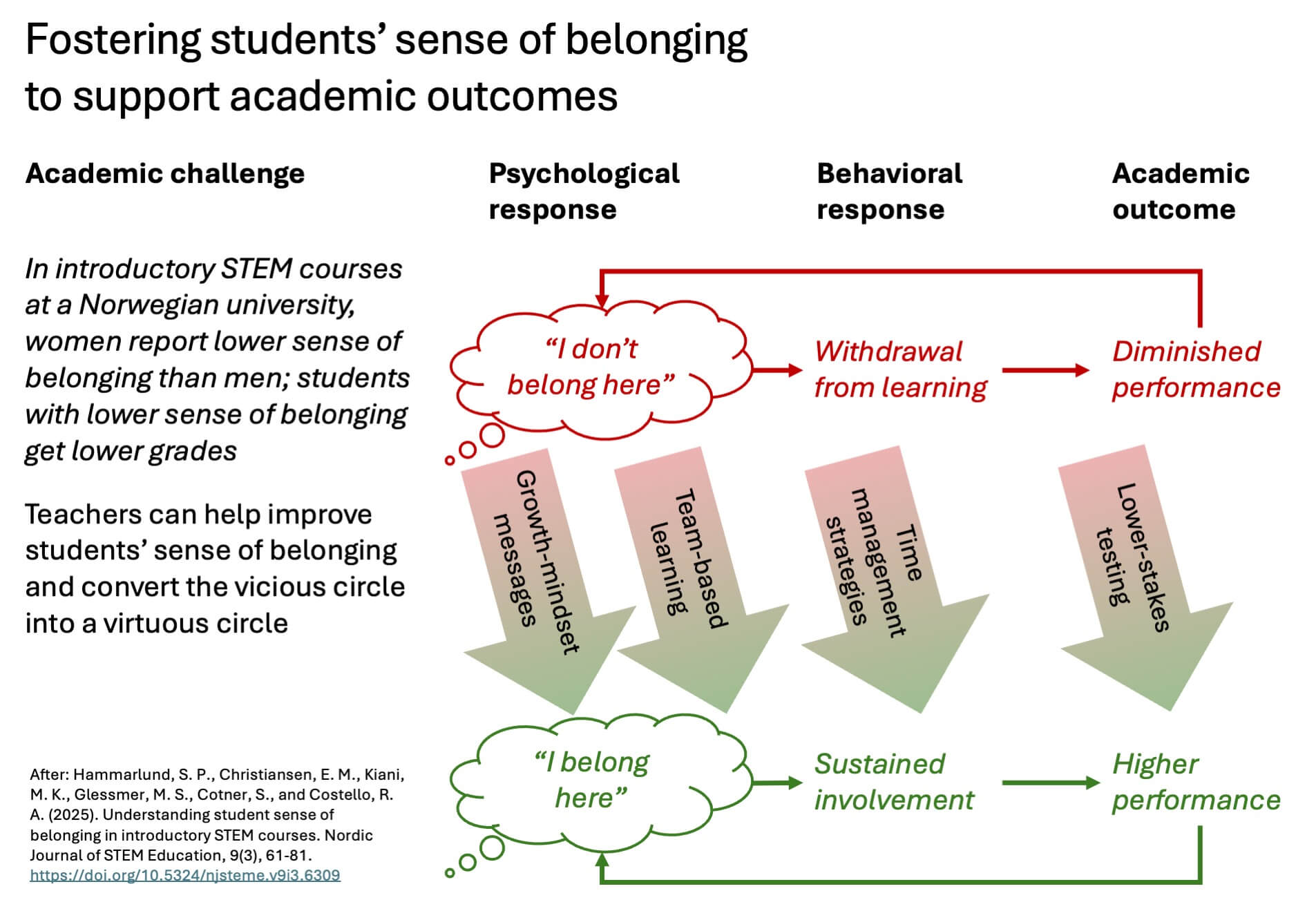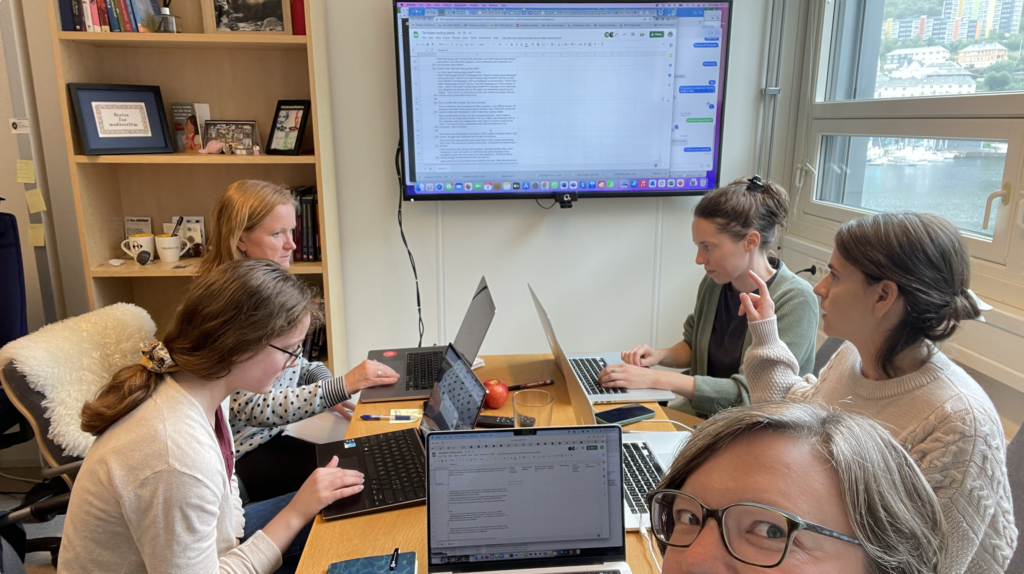
Now published: Hammarlund et al. (2025) “Understanding student sense of belonging in introductory STEM courses”
In this article, we investigate sense of belonging of students in STEM courses at the University of Bergen, Norway. We find — as expected from studies in mostly a US context, but for the first time investigated in a Scandinavian culture with generally high gender equality — that women report significantly lower sense of belonging than men, and that students with lower sense of belonging generally have lower grades. As shown in the featured image, this can lead into a vicious circle.
We also asked students about challenges they face — for students with low sense of belonging this is mostly overwhelm and stress — and what could be done about those. Based on their responses, we suggest evidence-based practices that teachers can adopt to break the vicious circle and help students enter a virtuous circle of increased academic outcomes reinforcing a sense of belonging and vice versa; for example getting rid of high-stakes testing (which we also write about in the sister paper by Costello et al., 2025), helping students with time management by breaking tasks into smaller pieces, or with connection to other students by using team-based learning. Teachers can also put effort into sending growth-mindset messages. And I collected some other suggestions back when we were first working on this article (for a picture from back when, see below!). This is it for my quick summary, but check out the publication, too!
Hammarlund, S. P., Christiansen, E. M., Kiani, M. K., Glessmer, M. S., Cotner, S., and Costello, R. A. (2025). Understanding student sense of belonging in introductory STEM courses. Nordic Journal of STEM Education, 9(3), 61-81. https://doi.org/10.5324/njsteme.v9i3.6309
